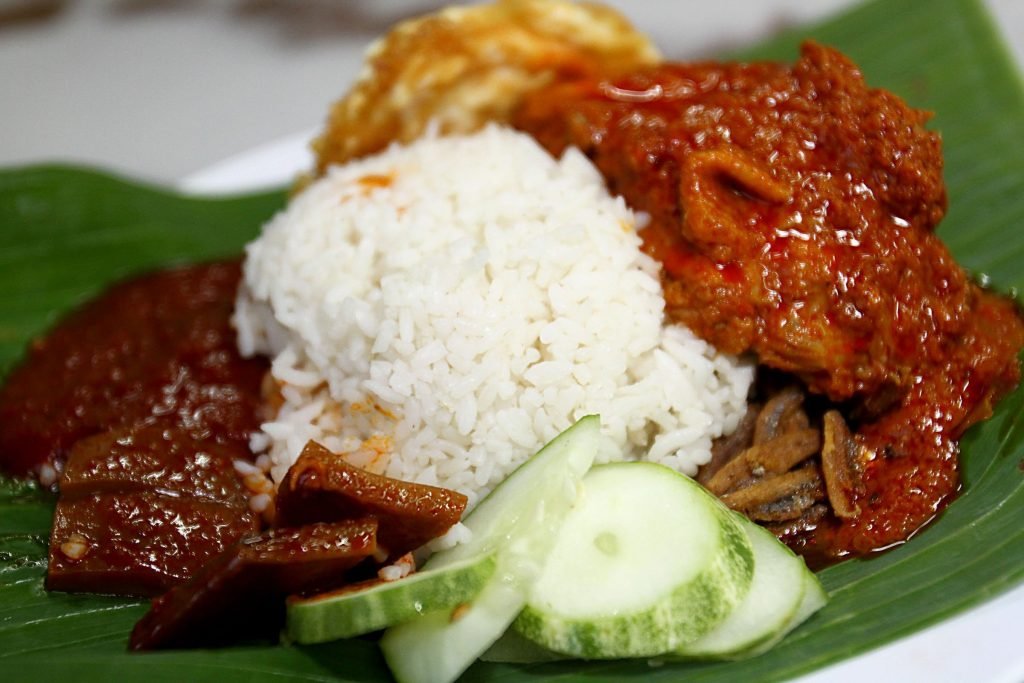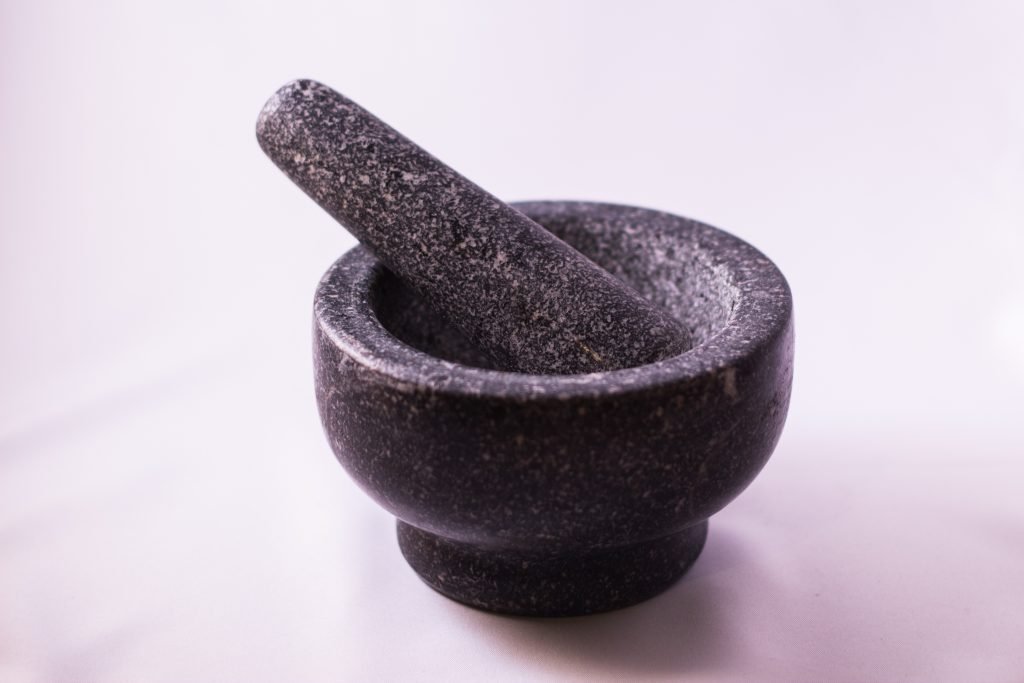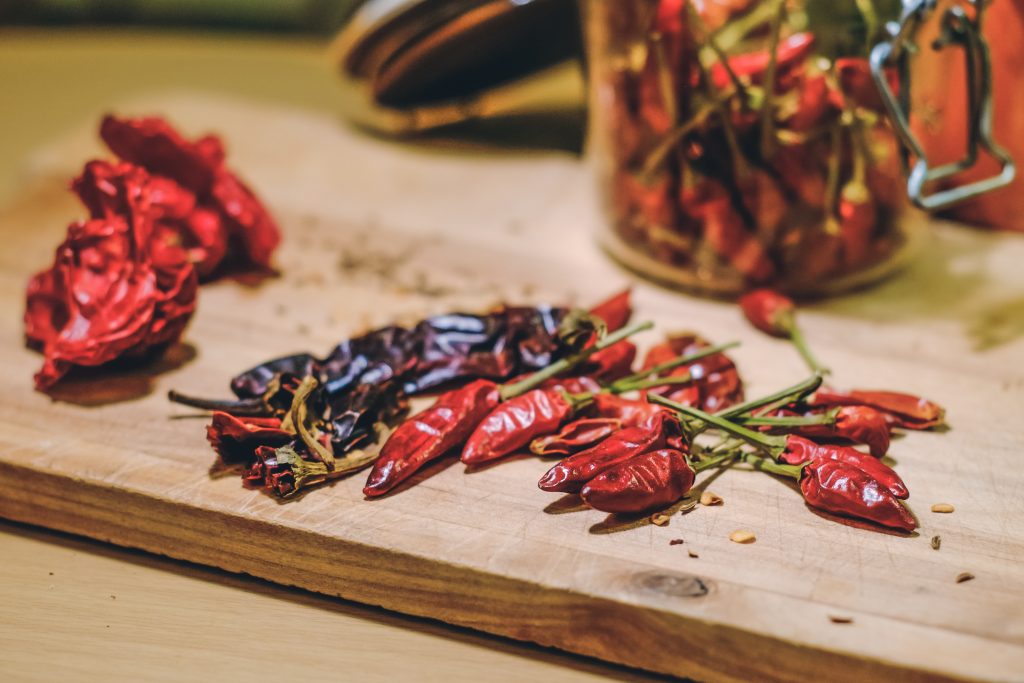
Nasi lemak started as a humble dish consisting of coconut milk rice, ikan bilis (anchovy) sambal, slices of cucumber, hard-boiled egg and roasted groundnuts wrapped in banana leaf, but has now evolved into a nationwide phenomenon. The once simple dish has grown and evolved to feature accompaniments such as fried chicken, chicken rendang, paru (lung) beef and even prawn curry.
Whether you prefer the traditional version or the buffed up one, there is nothing as quintessentially Malaysian as nasi lemak. Take a stroll down any street and you will find yourself hard pressed to find a local who has never heard of the dish. However, ask them how to prepare the dish and the story becomes different. Today, we aim to change that, with a simple yet delectable nasi lemak recipe for the ages.

Ingredients for preparing Nasi Lemak
- Coconut Milk Steamed Rice
- 2 cups of rice
- 3 screwpine leaves
- Salt to taste
- 1 small can of coconut milk
- Water
- Tamarind Juice
- 1 cup of water
- Tamarind pulp (size of a small ping pong ball)
- Sambal Ikan Bilis (Dried anchovies sambal)
- 1/2 red onion
- 1 cup ikan bilis (dried anchovies)
- 1 clove garlic
- 4 shallots
- 10 dried chillies
- 1 teaspoon of belacan (prawn paste)
- 1/4 teaspoon of salt
- 1 tablespoon of sugar
- Other ingredients
- 2 hard boiled eggs (cut into half)
- 1 small cucumber (cut into slices and then quartered)

How to prepare Nasi Lemak
- Just like making steamed rice, rinse your rice and drain. Add the coconut milk, a pinch of salt, and some water. Add the pandan leaves into the rice and cook your rice.
- Rinse the dried anchovies and drain the water. Fry the anchovies until they turn light brown and put aside.
- Pound the prawn paste together with shallots, garlic, and deseeded dried chilies with a mortar and pestle. You can also grind them with a food processor.
- Slice the red onion into rings.
- Soak the tamarind pulp in water for 15 minutes. Squeeze the tamarind constantly to extract the flavor into the water. Drain the pulp and save the tamarind juice.
- Heat some oil in a pan and fry the spice paste until fragrant.
- Add in the onion rings.
- Add in the ikan bilis and stir well.
- Add tamarind juice, salt, and sugar.
- Simmer on low heat until the gravy thickens. Set aside.
- Cut the cucumber into slices and then quartered into four small pieces.
- Dish up the steamed coconut milk rice and pour some sambal ikan bilis on top of the rice.
- Serve with cucumber slices, and hard-boiled eggs.

Where is Nasi Lemak from?
In recent times, there has been a constant bragging-rights battle between Malaysia, Singapore, and Indonesia in relation to which country could be attributed as the inventors of nasi lemak. Realistically, the true battle is between Malaysia and Indonesia.
While the true origins of the dish are impossible to track, local experts state that in the olden agrarian Malay society, the villagers would consume a healthy serving of nasi lemak for breakfast before heading out to the fields. The laborious work required a hearty yet cost-efficient meal in the morning, with nasi lemak checking the boxes for carbohydrates from the rice, oils from the sambal, and protein from the anchovies.
While universally regarded as an appealing dish, a common misconception people have with nasi lemak is translating it as “fatty rice”. In the olden days, coconut milk was not considered as ‘fat’, instead was seen as a fortifying ingredient that gave a smoother taste and richness to the dish.
